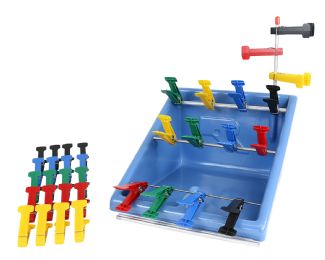

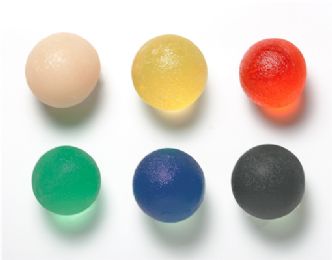




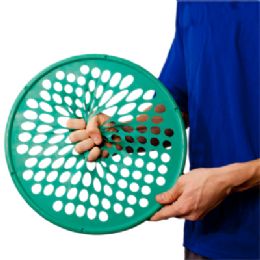

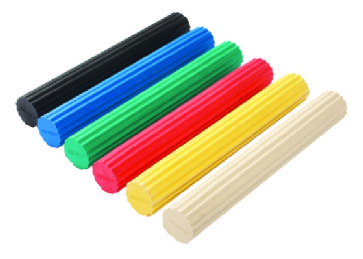



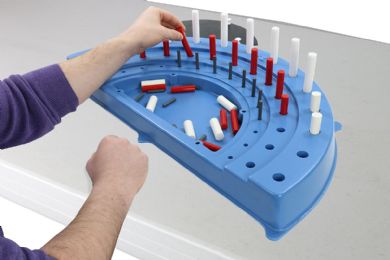




What is Hand Therapy?
Hand therapy involves the rehabilitation of the hand, fingers and wrist by combining physical and occupational therapy. It can also be used for acute or chronic pain. The hand area may have been affected by disease, trauma or a neurological disorder. The goal of the treatment is for an individual to be able to have the best use of the hand after a diagnosis and to go back to a productive life or as normal a life as possible. Emotional and psychological support may also be provided in this treatment.
Hand therapy is utilized for a variety of applications at locations which include rehabilitation centers, hospital, clinics and sports medicine facilities. Common conditions that may require hand therapy include burns, arthritis, fractures, nerve damage, and amputation of fingers. Other conditions may include assisting with carpal tunnel syndrome and to recover from a sports injury.
To form a diagnosis, a hand therapist will conduct a thorough sensory, musculoskeletal and strength examination of the damaged area. Other activities which may be included are training an individual to live with a prosthetic, or treating wounds and scars. The hand therapy also includes specific exercises designed to strengthen or increase the hand’s range of motion and agility in the affected areas. The hand therapy might begin soon after surgery or an injury, and the length of time spent in therapy can vary, depending on the extent of damage that was incurred.
What are Hand Therapy Exercises?
Hand therapy exercises are specific movements intended to recover or rehabilitate back to normal, pain-free hand movements. They can include picking up small objects to improve dexterity, motions to strengthen and stretch weak muscles, and hand and wrist stretches to increase flexibility. The exercises should include movements of the wrist as well as the fingers, in order to rehabilitate the hand successfully. For example, a problem in the wrist can affect the ability of the hand to change positions. Wrist problems can also change the way the fingers move since the wrist goes right into the hand. Hand therapy exercises can help strengthen weak muscles, stretch tightened areas, and restore the precise movements of the fingers.
Hand therapy exercises typically begin with restoring the strength and flexibility of the wrist, since it is an important part of the hand’s abilities. This is performed by flexing the wrist downwards so the fingers point towards the floor, then extending it so the fingers point up to the ceiling. Additional wrist stretching includes the rotational aspects by moving the palm up and down, along with small side to side movements. Once the flexibility is restored, these motions can be performed with or without weights to bring back muscle strength. The precise movements of the fingers must also be incorporated into hand therapy exercises. This is accomplished by running the fingers both individually and as a unit through range of motion exercises which can include flexing the fingers into a fist, and opening the fingers.
What is a Hand Grip?
A hand grip is a portable and compact lever-type device that an individual squeezes in order to build up hand muscle and strength. It also allows the buildup of the lower arm muscles. The benefits of using a hand grip are hand endurance, increased hand strength, and improved dexterity. Hand endurance is increased when using a hand grip because it increases the quantity of force the hand can apply and the length of time it can apply that force. This can help an individual in everyday tasks, such as when carrying things like heavy bags or a suitcase. After hand endurance is built up, it will not become as tired from carrying items around. When hand strength is increased, the fingers and wrist will have more power in them. Improving dexterity is a result of the fingers being built up independently.
What is a Hand Therapy Ball?
A hand therapy ball can come in a variety of sizes and shapes and is made to exercise the hand muscles to keep them fit and healthy. A common hand therapy ball is a stress ball. It can be used by those concerned with carpel tunnel syndrome and similar hand problems and is not always spherical in shape. It is generally made from foam rubber and should be squeezed by the fingers and hand together. The foam rubber type of stress ball is made by injecting the foam’s liquid components into a mold, which results in a chemical reaction. This reaction creates carbon dioxide bubbles that then become foam. Other types of hand therapy balls have different density gels inside a skin made from rubber or cloth. Where repetitive stress injuries are common, a stress ball can be particularly popular in those work environments.
How do I Choose the Best Finger Exerciser?
First, decide whether a unit that focuses on strengthening the entire hand and wrist is needed, or one that isolates and extends each finger. A finger exerciser can be anything from a device constructed of plastic to therapy putty. Some may even be ergonomically made to fit the curves of the hand. One which offers adjustable resistance will enable the user to adjust the tension on it at the user’s own pace. When the fingers get stronger, the resistance can be tightened to make the therapy program more challenging. Some exercisers provide feedback as the fingers are worked.
Consider a web hand exerciser for improving the grip and strength of the fingers and wrist. It is constructed of rubber and made to provide flexibility to help improve the range of motion and mobility in the hand and wrist. Those with stiff finger joints or arthritis may benefit from this type of exerciser. If rehabilitation of the thumb is needed, choose a device specifically made to isolate and strengthen that one digit.
Rehabmart is proud to carry an extensive collection of top quality hand therapy exercise products from experienced vendors, which include Bailey Manufacturing Company, Sammons Preston, North Coast, Fabrication Enterprises, Skil-Care, Hausmann Industries, Maddak, Pivotal 5, Enabling Devices, McKesson Medical-Surgical, Clinton Industries, and others.
Hulet Smith, OT
Rehabmart Co-Founder & CEO
lb